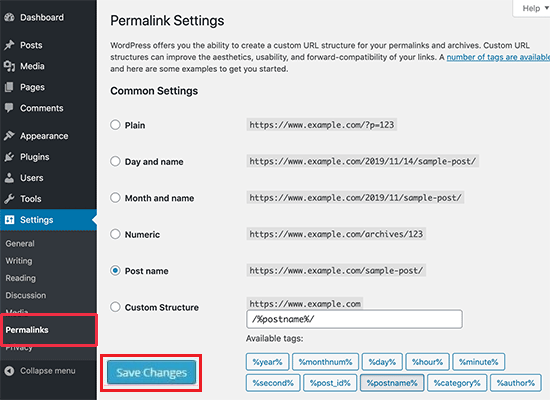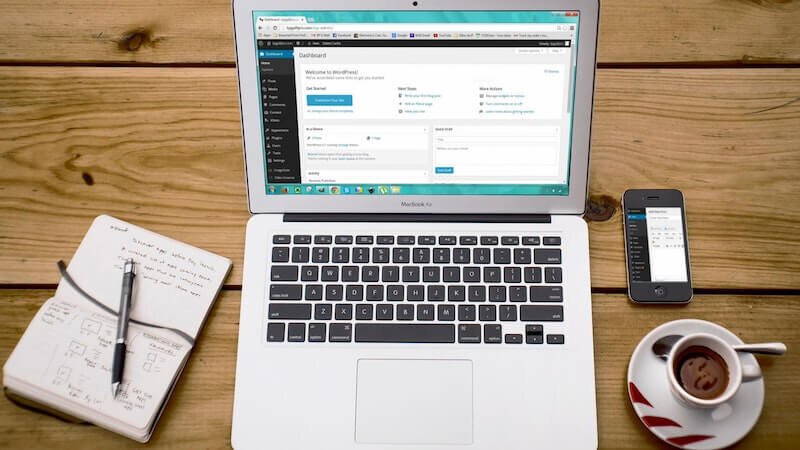Do you have your website blocked because WordPress not working? Don’t worry, you can restore WordPress in 3 simple steps. Yes I know, what worries you the most is not so much reinstalling WordPress, but rather the time you have dedicated to the boring installation and configuration procedures of the plugins, which you have installed, and the hundreds of articles, published, which by now the search engines research they have indexed and which, coincidentally, were also bearing fruit.
Quite a hassle. But all is not lost. In this guide, I’ll explain how you can get WordPress back to normal within a few minutes. Without applying tedious and complicated recovery procedures and absolutely without touching the MySQL database. The only action required is copying and pasting a simple file and resetting a WordPress settings. In the following paragraphs I will show you how to do it. So, don’t waste time, dedicate five minutes of attention to reading this guide and you will see your website reborn.
1. WordPress presents the classic blank page
It is absolutely not uncommon to find yourself in the condition of accessing your articles and finding yourself faced with a beautiful blank page with no information. At this point, the first thing that comes to your mind is: “try to access the WordPress Dashboard”, unfortunately, also in this case, WordPress reproposes the same blank page. Well, quite a challenge. Meanwhile a myriad of negative thoughts invade your mind. And while you search the web for some useful information for recovery, your website is blocked and despair takes over.
At this point, given that you have never done a backup of your WordPress site, you are evaluating how important it is to always have a useful backup of your website. Yes, I know. There is a famous phrase that makes you understand what it is and how important it is to make a regular backup of WordPress. It is that is: “Backup is that thing you usually don’t need, until you need it.” Nice, right? Indeed it is. Unfortunately, however, you do not have a backup available. So, how do you reset WordPress ? Don’t worry, this is your lucky day. You just need one file and that’s it.
Read more: How to create an android app step by step
2. The importance of the “.htaccess” of WordPress
When WordPress presents the classic white page, it is because you have installed a plugin that is not compatible with your version of the CMS. Now, however, that matters for little. Let’s move quickly to the facts.
I am sure, you have heard of two files, very important for a web server. These two files are: “. htaccess” and “wp-config.php”. The first is for configuring and setting the behavior of the web server. The second is for configuring and setting up WordPress.
So, when WordPress responds with the classic blank page, it means that something is corrupted in these two files. Even if you’ve never touched or modified them.
Unfortunately, some plugins, especially those dealing with caching and the security of your website, make changes to these files without your knowledge. However, the blank page problem only affects the “.htaccess”. So, to restore WordPress, all you have to do is recreate, copy and paste this file inside the root of your web space. Since you don’t have a copy of this file, you need to recreate it manually.
3. Manually create the “.htaccess” of WordPress
Create the file from scratch “.htaccess” is a really simple operation. Also because in this file, in default mode for WordPress, there are only very few lines of code.
Now, create a new file on your desktop, and rename it in “.htaccess”, without extension, taking care to insert a “.” at the beginning of the file name. Open the file “.htaccess” file you just created, copy and paste the following lines into the file:
# BEGIN WordPress
Rewrite Engine On
RewriteRule. * - [E=HTTP_AUTHORIZATION:%{HTTP:Authorization}]
RewriteBase /
RewriteRule ^index \. php $ - [L]
RewriteCond %{REQUEST_FILENAME } ! -f
RewriteCond %{REQUEST_FILENAME } ! -d
RewriteRule. /index.php [ L]
# END WordPress
At this point, the file “.htaccess”, is ready to be copied to the root of your web space. Now, open your FTP client, and copy the “.htaccess” in the root. Simply by selecting and dragging the file to its original location. Now, if you try to access WordPress, you should see the classic “404 Page not Found”. As strange as it may seem, WordPress is already working. The problem now concerns an incorrect setting of the WordPress Permalink structure. Just to be clear, the permalink is the type of structure you chose, when configuring WordPress, for your URLs.
4. Resetting the WordPress Permalink Structure
Now, to reset the Permalink structure, you need to access the WordPress dashboard. Yes, don’t worry, I told you that WordPress already responds, so you can easily access its control panel.
Once logged in to the WordPress control panel, you can reset the permalink structure by selecting these items from the main menu. Thus, as shown in the figure:

Then, reselect the desired permalink, and click on the “Save Changes” button. Now, try logging into your website again and I’m sure WordPress will load your web pages normally as if nothing happened.
5. Other useful information
I take this opportunity to remind you that the importance of performing scheduled and scheduled backups of your WordPress site and your MySQL database is an operation that is of fundamental importance in managing your blog. WordPress, fortunately, has an infinite number of free plugins that perform scheduled backups. Among the most accredited plugins is UpDraftPlus. At this link you will find everything you need to implement it on your website.
Read more: The best free keyword planner
